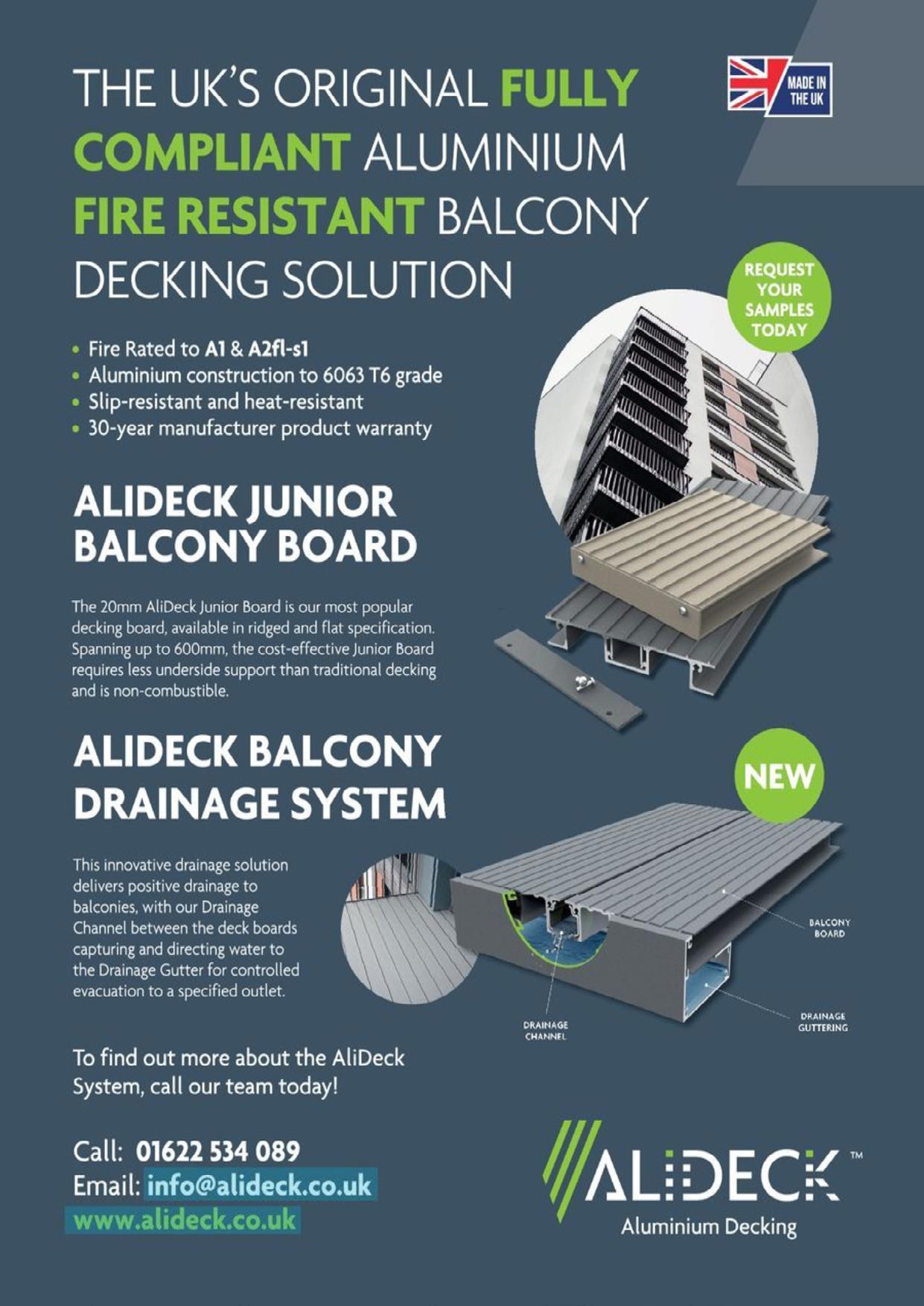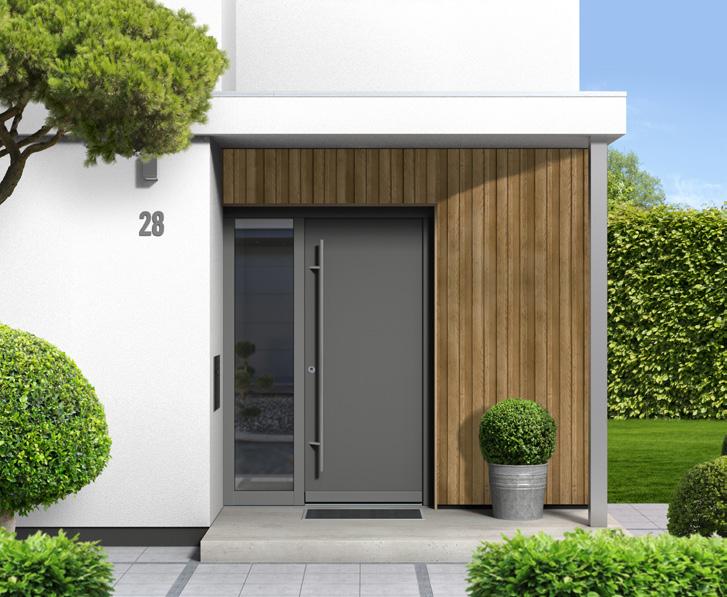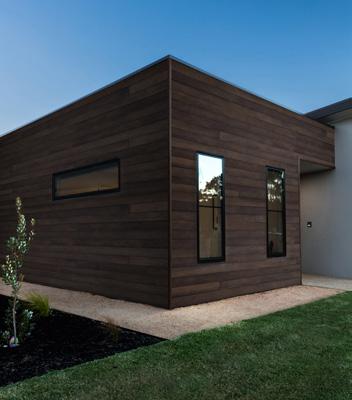
5 minute read
Millboard Cladding 29 CAN Geotech
A major new range from the award-winning company
Advertisement
Millboard has launched a suite of cutting-edge cladding materials that will cement the company’s reputation as one of Britain’s leading home and garden material manufacturers.
In its thirteen-year history, Millboard has continually broken new ground, notably for its flagship UV, split, rot and slip-resistant decking product that has been used in builds as prestigious as the Burj Al Arab, Kew Gardens and Wimbledon.
The new range of cladding takes its cue from the first-rate attributes of the decking range. Available in two styles (‘V Groove’ and ‘Board and Batten’) and a wide range of colours, it provides the same assurance of UV resistance and eliminates the risk of warping, twisting or rotting. And just like the decking range, the cladding has been hand-moulded from carefully selected natural timbers, to provide an unmistakably organic look.
From the smooth finish of the V Groove to the pleasing grain variance of the Board and Batten style, there’s a Millboard cladding style for every property type. A year in development, this product is perfectly designed to stand the test of time and to require minimal maintenance. In fact, the distinctive chamfered cut of the profiles enables the rain to wash the boards, dramatically reducing the need for manual cleaning.
The boards are made from a polyurethane-mineral composite that boasts greater eco credentials than rainforest-depleting timber. The unique properties of this enduring material mean that you’ll never suffer from streak marks around window seals, be disappointed by dramatic colour changes, or have to maintain it with expensive and timeconsuming treatments.
The extra-wide sizing of the boards means that the cladding can be mounted quickly, providing a lightning-fast renovation of the exterior of a property, and the boards can also be used internally, for feature walls and dividers. Additionally, the cladding can be mounted vertically or horizontally to suit the tastes of the architect or homeowner.
As well as providing an instant refresh to a property, the boards can also help homeowners to achieve a better energy rating. As it is made from polyurethane foam, Millboard cladding has good insulation properties and protects against extreme heat or extreme cold. With a growing domestic focus on thermal efficiency, cladding can help to sell your property, or to achieve the energy rating you need to rent it out. Some homeowners have struggled with building regulations for putting bigger windows in, but with the insulation provided by cladding, it can often be possible to design bigger apertures into the building.
The team at Millboard are excited about their latest development, and the launch of the new cladding range represents a significant milestone for the company. The new cladding collection marks Millboard’s expansion into a broader range of high-calibre home and garden products.

Millboard Cladding was officially launched November 2020.
For more information about the product range, visit Millboard’s website or contact the team today on 02476439943 or enquiries@millboard.co.uk

Schöck product solution is just dandy at Regency Heights
The Old Oak and Park Royal areas of West London are undergoing a massive transformation. A £26 billion masterplan to create a new district is taking shape in this part of London and it will see around 25,000 new homes built over the next 20 years. An already advanced scheme is the First Central development, part of which is the imposing Regency Heights. Built on the former site of the Sir Giles Gilbert Scott designed Guinness Brewery, it is a residential-led, mixed use scheme providing 807 residential units in three courtyard blocks wth a public plaza. The buildings range from five to twenty-seven storeys and the design is reminiscent of the Brewery’s early modern industrial brick architecture. The southern block is anchored by a brick-clad residential tower, which when complete, will create a new 90m high local landmark. The majority of apartments are fitted with steel balconies. So it is vital that with the design detailing any risk of thermal bridging is minimised and a key consideration throughout is the use of effective structural thermal breaks.
Consequences of thermal bridging
Local heat loss is a major factor, resulting in more energy being required to maintain the internal temperature of the building. Also, low internal surface temperatures in the area of the thermal bridge can cause condensation. This can result in structural integrity problems with absorbent materials, such as insulation products or plasterboard. Mould growth is also a possible risk, which in a residential situation can cause asthma and allergies. The proven solution to any such problems is the Schöck Isokorb structural thermal break. In the case of Regency Heights, over 2500 units of the Isokorb T type SK are installed. This is a load-bearing thermal insulation element with an 80mm insulation thickness for connecting cantilevered steel balconies to a reinforced concrete slab. The innovative fastening of the support beams makes any steel structure durable, safe and visually attractive, permits a high degree of prefabrication and minimises installation time on site. The T type SK transfers positive or negative moments and shear forces. And since it can bear heavy loads, it is ideal for resolving the technical and structural issues of designing modern balconies.

Guaranteed performance
The Schöck Isokorb T type SK units guarantee totally verifiable performance standards, meet full compliance with all relevant UK building regulations and offer BBA Certification and LABC Registration. When incorporated into residential buildings, the required fRsi value, the temperature factor used to to indicate condensation risk (that must be equal to or greater than 0.75) is always comfortably met. The range complies with the Government Standard Assessment Procedure, SAP 2012, concerning CO2 emissions from buildings and respectively heat losses through non-repeating thermal bridges. The lambda values of the Isokorb also enables energy loss to be reduced by as much as 84% to 91%.
For full information on the Isokorb T type SK contact Schöck on 01865 290 890 or visit the product section of the website at www.schoeck.com


